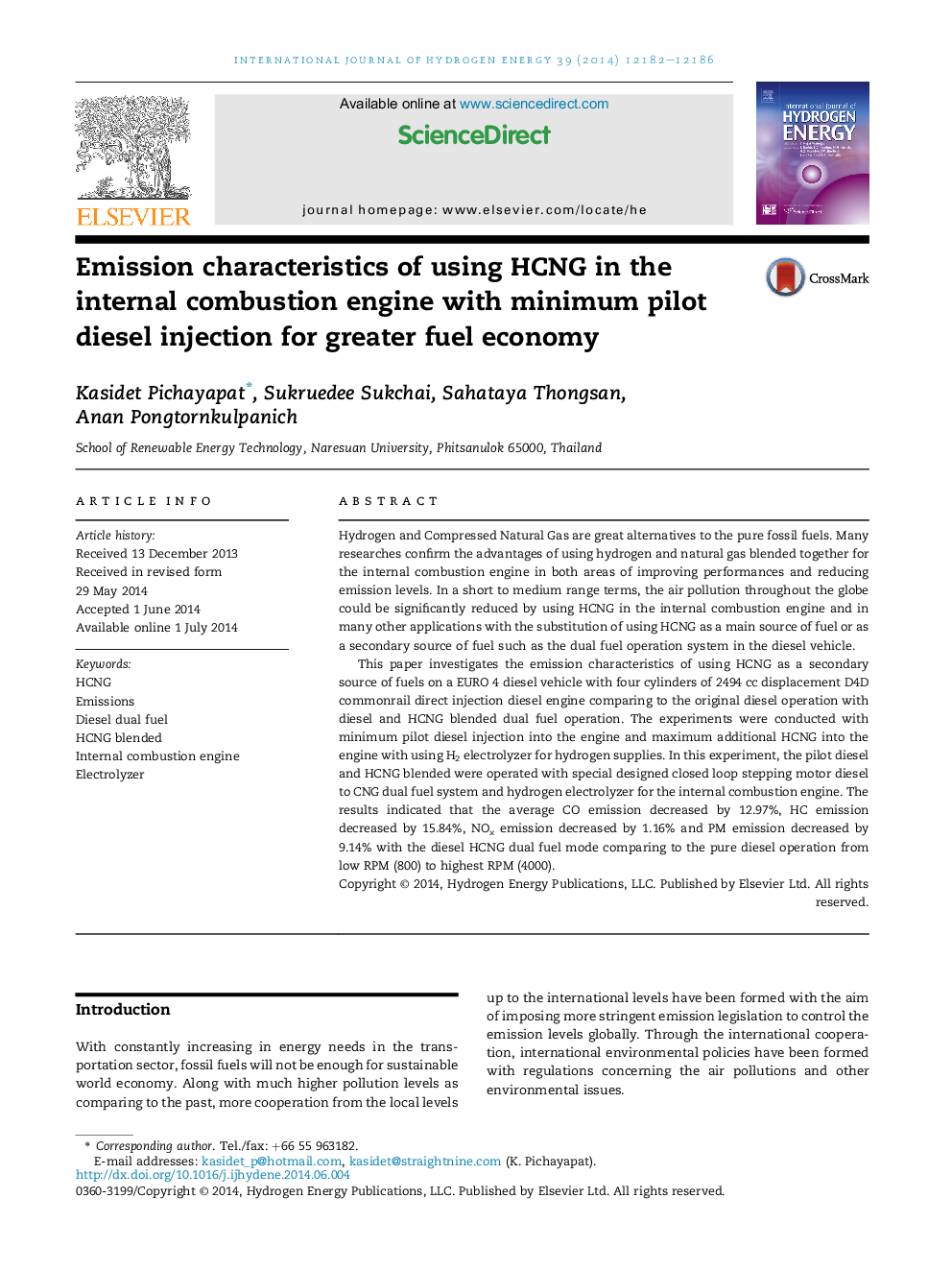| Article ID | Journal | Published Year | Pages | File Type |
|---|---|---|---|---|
| 1273016 | International Journal of Hydrogen Energy | 2014 | 5 Pages |
•We studied the emission characteristics of blending HCNG as a secondary source of fuels on a EURO 4 diesel vehicle.•Important exhaust emissions were examined and compared to illustrate HCNG capabilities of reducing these emissions.•HCNG addition to original diesel engine reduced overall emissions comparing to pure diesel operation.
Hydrogen and Compressed Natural Gas are great alternatives to the pure fossil fuels. Many researches confirm the advantages of using hydrogen and natural gas blended together for the internal combustion engine in both areas of improving performances and reducing emission levels. In a short to medium range terms, the air pollution throughout the globe could be significantly reduced by using HCNG in the internal combustion engine and in many other applications with the substitution of using HCNG as a main source of fuel or as a secondary source of fuel such as the dual fuel operation system in the diesel vehicle.This paper investigates the emission characteristics of using HCNG as a secondary source of fuels on a EURO 4 diesel vehicle with four cylinders of 2494 cc displacement D4D commonrail direct injection diesel engine comparing to the original diesel operation with diesel and HCNG blended dual fuel operation. The experiments were conducted with minimum pilot diesel injection into the engine and maximum additional HCNG into the engine with using H2 electrolyzer for hydrogen supplies. In this experiment, the pilot diesel and HCNG blended were operated with special designed closed loop stepping motor diesel to CNG dual fuel system and hydrogen electrolyzer for the internal combustion engine. The results indicated that the average CO emission decreased by 12.97%, HC emission decreased by 15.84%, NOx emission decreased by 1.16% and PM emission decreased by 9.14% with the diesel HCNG dual fuel mode comparing to the pure diesel operation from low RPM (800) to highest RPM (4000).
